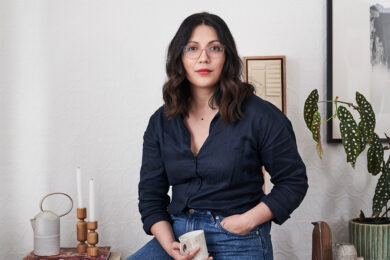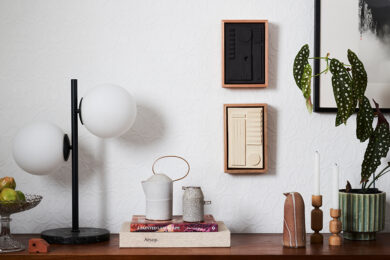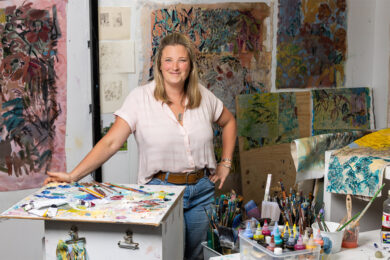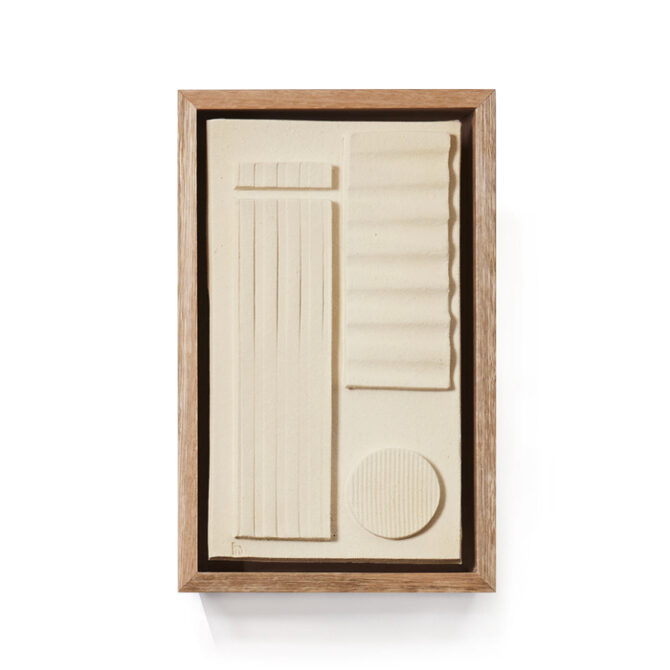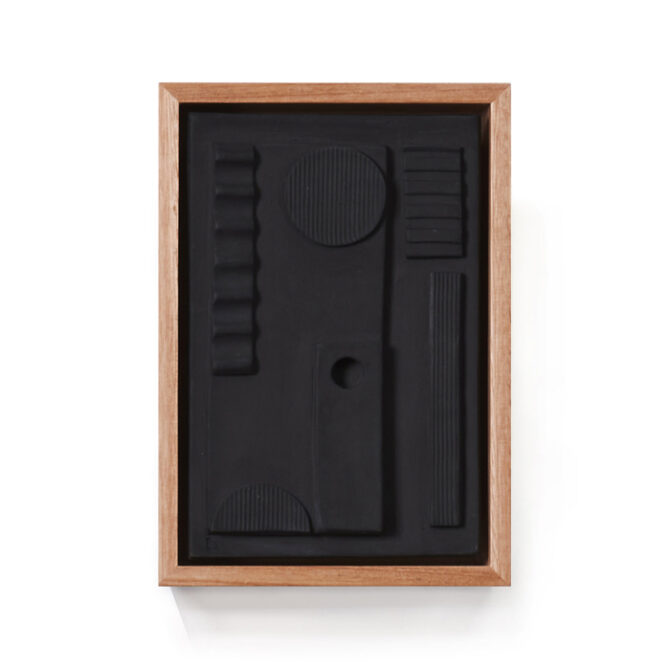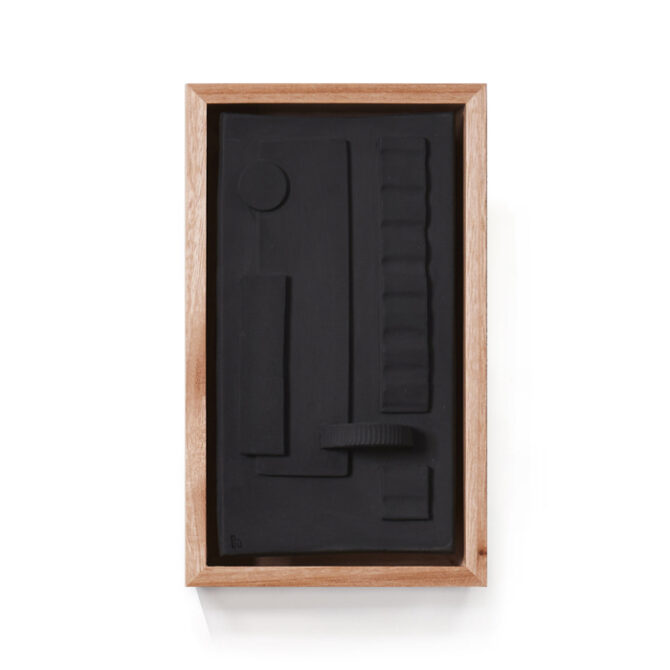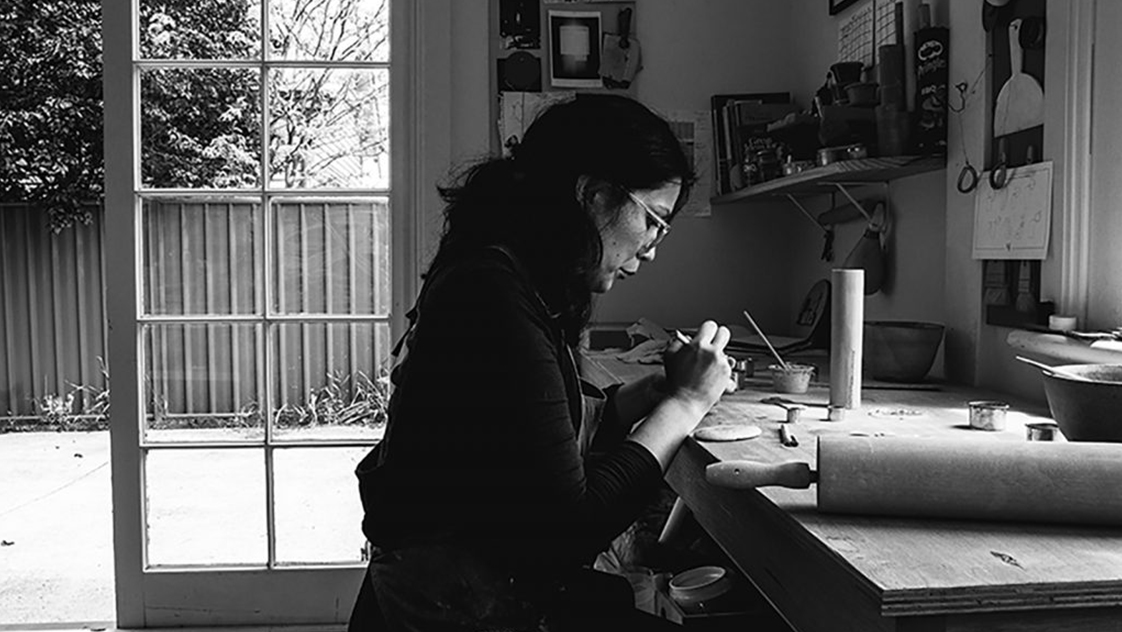
In Conversation: Cassie Hansen
Cassie Hansen, a ceramicist working on Taungurung country (Kyneton), is best known for her work inspired by the simplified forms and linear qualities of architecture and the built environment, usually taking the form of midfire and stoneware vessels, jugs and objects.
In the lead up to our Artist in Focus featuring Hansen’s latest body of work, Scale and Assembly, we caught up with the her to learn more about her creation process behind her new direction to wall-mounted clay tablets and what led to her interest in ancient artefacts. Read on below!
Your collection ‘Scale and Assembly’ featured wall mounted works, departing from your previous work at Modern Times which has featured small sculptural pieces. What prompted this new direction?
I came across an image of a 5000-year-old clay tablet that featured the ground plans of a house by the Sumerians, the earliest known civilization in the historical region of southern Mesopotamia. The tablet is even inscribed with labels showing for various rooms and parts of the building, such as doors, stairs and a central courtyard. It’s incredible how functional the ancient plan is! This tablet was the influence behind this series of work - I wanted to make my own clay tablets that communicated my own architectural message.
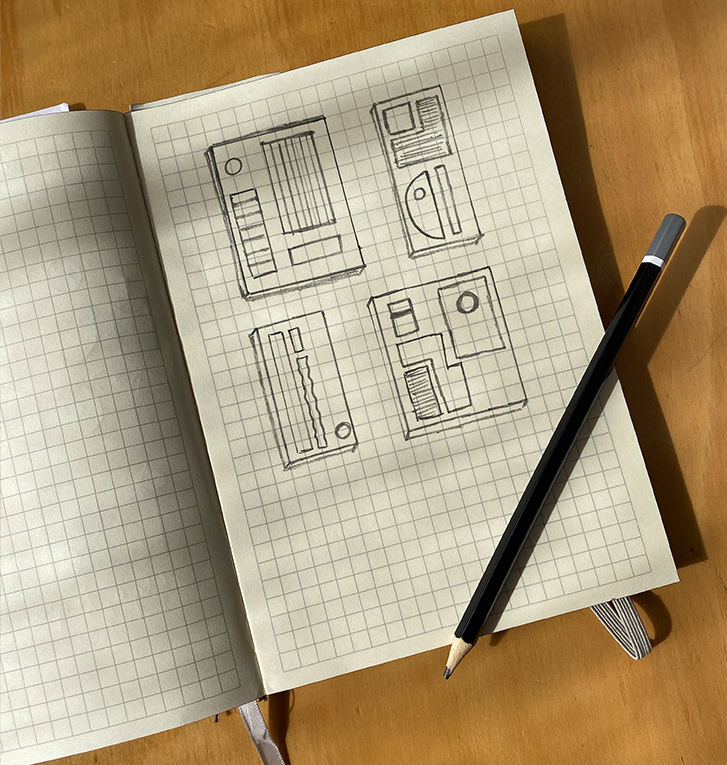
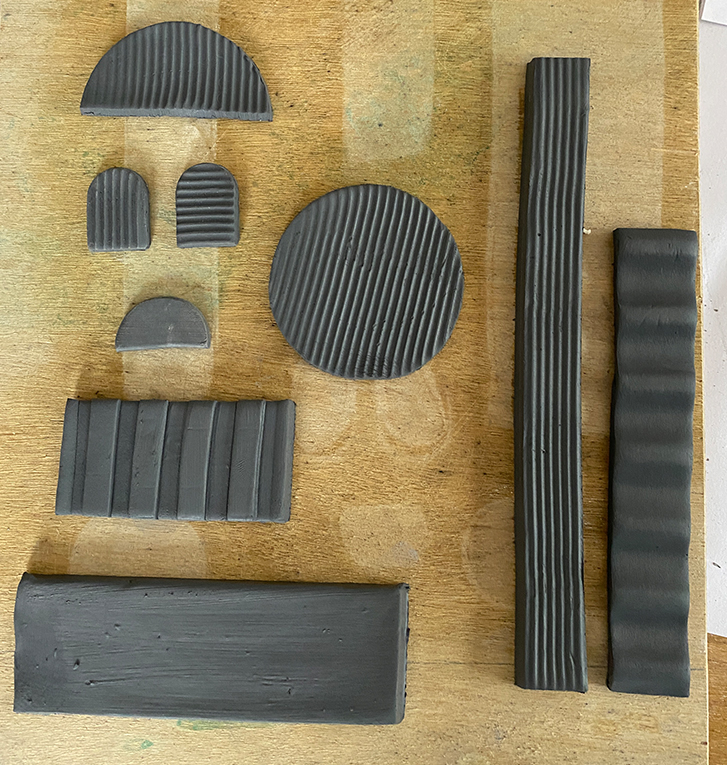
Can you tell us a little about your process behind the clay panels?
I begin my tablets by sketching the idea for each one, trying to achieve a collection of shapes and textures that can be read both as an architectural site plan, or as a material palette an architect or designer might draw on for their work. Once I have the idea for the tablet, I hand roll or manipulate each component, sometimes using building materials to help make these. Mesh, wall cladding samples and the backs of tiles are just some of the materials I use to create the textures and patterns you see on the tablet. I then assemble it all together, making sure the scale of each element feels balanced. I then dry them slowly over many weeks so they don’t warp or crack.

Do you find your work in design publishing has influenced the way you approach your ceramic work? In what way?
Absolutely. In my work as a design editor, I come across incredible interiors, architecture and design on a daily basis. That continual exposure through my day job - it seeps into my ceramic practice, more than I probably realise! I think the biggest impact it has is in how I compose and balance certain elements, and how much “breathing space” I leave. I think the pieces might be a bit more clumsy if I didn’t have this instinctual approach to it - an approach which has come about simply from seeing so much composed and harmonious design over many, many years.
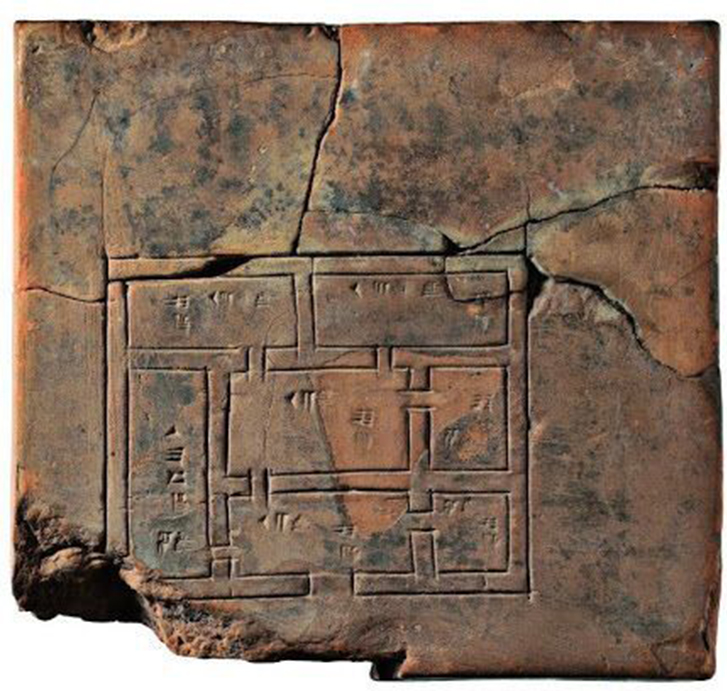
You mention that you have created a library of your own glazes, can you tell us a bit more about that?
While there’s not much glaze to speak of in this series, I do love the challenge of creating my own glazes. For me, it’s the hardest part of ceramics. It involves chemistry, patience and repetition - three things I’m crap at! But I like to test myself.


If you could collaborate with any other artist or brand, who would it be and why?
Bloody hell, tough question! I think it’d be great to learn from someone like Ilse Crawford. She came from a design magazine background too, and switched over to become a designer of both interiors and objects. She’s got quite the empire now so a collaboration would make terrible business sense for her, but I’d get a lot out of it!
